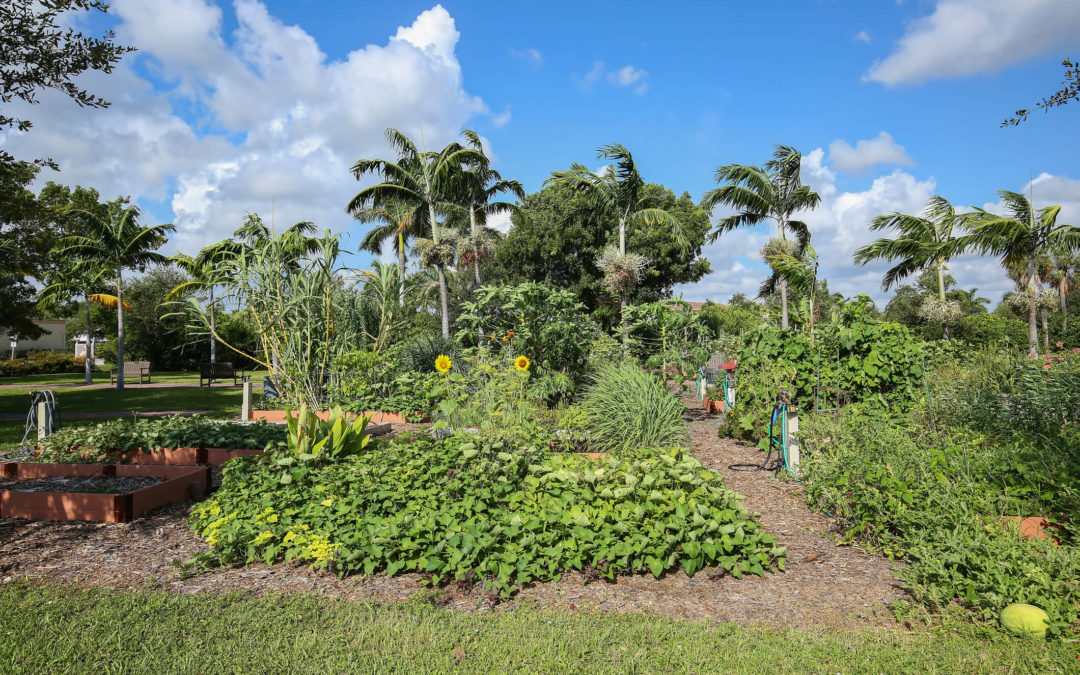Everyone knows that plants need water, sunlight, and fertilizer to grow, but expert gardeners understand that companion planting is the key to a vigorous garden full of thriving edibles.
Companion planting is when two or more plants are grown together because they benefit each other in a variety of ways. For example, plants have specific nutrient needs, so if you group plants together that need different sustenance, they will not be gobbling up their companion’s food source. Another important factor to consider is insects. When companion planting is done correctly, the group will successfully ward off destructive pests while attracting the bugs that are beneficial.
Prepare for a bountiful garden!
STEP 1: Decide what you want to plant. Imagine all the wonderful plants you can grow in your garden that will be transformed into fresh salads and delicious recipes. Once you decide what you want in your garden, then you will know what plants should be grouped together. Keep in mind that not everything grows well in the sweltering heat. If you have never grown a garden in Central Florida, have fun with it, but consider this a learning experience that will provide you with valuable lessons to use the following year.
STEP 2: Choose their ideal companions.
The following bolded list is focused on plants that are known to thrive in Central Florida summer gardens. However, their suggested matches are not considered the strongest choices to grow under scorching rays, but they are still worth a try since companion planting may give them the extra support they need to flourish.
Cherry tomatoes – These fellas can be picky about their sidekicks! Nevertheless, they usually grow well beside asparagus, basil, beans, borage, carrots, celery, chives, collards, garlic, lettuce, marigold, mint, nasturtium, onions, parsley, and peppers. Avoid grouping them with dill, Brassicas, corn, potatoes, cucumbers, and kohlrabi.
Eggplant – These purple beauties grow perfectly when paired with amaranth, beans, marigolds, peas, peppers, spinach, and thyme. Never plant them next to fennel.
Hot and Sweet Peppers – Their best companions are asparagus, basil, carrots, cucumbers, eggplant, endive, oregano, parsley, rosemary, squash, Swiss chard, and tomatoes. Do not plant next to beans, Brassicas, or fennel.
Malabar Spinach – This is a marvelous companion for Brassicas, eggplant, leeks, lettuce, peas, radishes, and particularly strawberries. They will not do well if they are planted beside potatoes.
Southern Peas – Pair these climbers with beans, carrots, celery, corn, cucumber, eggplant, parsley, parsnip, peppers, potatoes, radish, spinach, strawberries, and tulips. Never group them with onions.
Sweet Potatoes – They are happy living beside beets, bush beans, celery, corn, garlic, marigolds, onions, and peas. Avoid grouping them with asparagus, cucumber, Kohlrabi, melons, parsnips, rutabaga, squash, sunflowers, and turnips.
Watermelons – They make great companions for squash, but never plant them alongside potatoes.
Basil – This helpful herb is a perfect companion for tomatoes because it improves their flavor. It also provides added benefit when planted with peppers and oregano. Basil even helps repel nasty insects such as aphids, asparagus beetles, mites, flies, tomato horn worms, and mosquitoes.
Marigolds – Everybody except for beans enjoy the company of these pretty flowers because they chase away whiteflies, Mexican bean beetles, root knot nematodes, and root lesion nematodes.
Rosemary – Group this awesome herb with beans, carrots, Brassicas, and spinach because it deters cabbage moths, carrot rust flies, and Mexican bean beetles.
Sunflowers – Not only are these beautiful symbols of summer perfectly compatible with corn and squash, they are an excellent all-around addition to your garden because they attract pollinators. Avoid planting them beside potatoes.
STEP 3: Consider the size of your garden. While it would be wonderful to grow everything you usually buy at the grocery store, you may not have the space for such an abundant garden. Once you know how much room you have to work with, you can narrow down which plants you want to focus on growing.
NOTE: Make sure the sprinklers of your irrigation system can reach all corners of your garden to ensure that none of your plants go thirsty.
STEP 4: Sketch a diagram. Now that you know what you want to grow in your garden, it’s time to create a companion planting chart. Doing this will help you plot the perfect places for your seeds and seedlings.
Time to Play in the Dirt!
Now that you have strategically created a companion planting chart, head outside with your gloves and gardening tools to put those babies in the ground!
Keep a watchful eye on your future edibles and be sure to pull any weeds that crop up since they will deplete the soil of nutrients your plants need to grow big and strong. Watering daily is essential. It’s best to set your irrigation system to come on in the early morning because watering in the evenings can attract harmful insects.
In a few short weeks, all your hard work will pay off as you’re harvesting your delicious yields!
Remember, if you ever need assistance with sprinkler repair or irrigation in the Orlando area, make sure and give us a ring!

